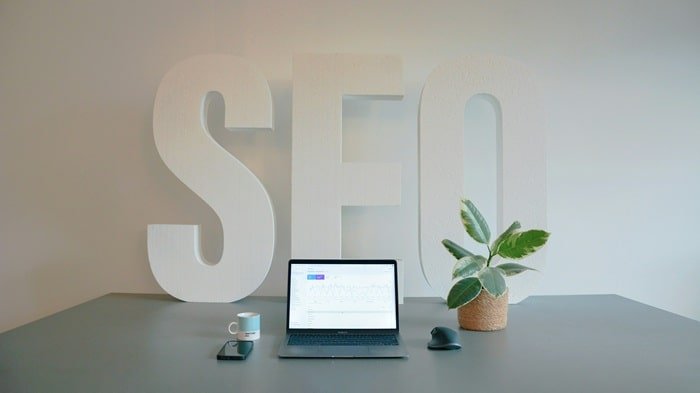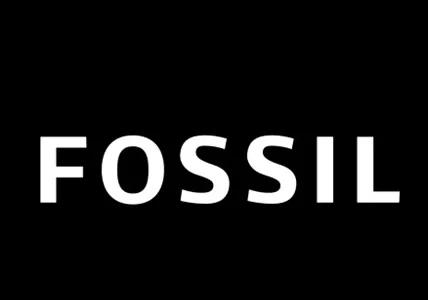Search engine optimisation has become a standard part of doing business online. Companies across Australia — from boutique agencies to national retailers — are investing heavily in SEO to get in front of their audience. But when it comes to pricing, the market can be confusing. Some agencies quote a few hundred dollars a month, while others charge several thousand. The gap raises an important question: what are you actually paying for?
Understanding seo costs in Australia starts with knowing what SEO really involves. It’s not just keywords and backlinks; it’s a mix of technical expertise, strategy, and time. Each component of an SEO campaign contributes to the overall investment, and skipping one often means paying more later to fix the gaps.
Many Australian business owners approach SEO like a mystery box — they pay a retainer, get a report each month, but don’t really see what’s happening behind the scenes. That’s why breaking down those costs matters. It brings clarity and helps businesses make smarter decisions about where their marketing dollars go.
Why SEO Prices Differ So Much
There’s no single rate card for SEO. Pricing varies widely because every project is different. A local café in Brisbane targeting “best coffee near me” will have a simpler strategy than a Sydney law firm competing for high-value legal terms.
Here are the main reasons SEO costs fluctuate:
- Scope of work – A full-service campaign that includes content, technical, and outreach will always cost more than basic on-page fixes.
- Competition level – The more competitive your market, the more time and expertise required to outrank rivals.
- Business size – Enterprise sites with hundreds of pages need far more resources than small business websites.
- Location – SEO services in major cities like Sydney and Melbourne often cost more than in regional areas due to demand and local competition.
- Experience of the agency – Established agencies with proven results typically charge higher rates than freelancers or newcomers.
To give a clearer idea, think of SEO like professional services — you wouldn’t expect the same hourly rate from a junior accountant as a senior partner. The same logic applies here: you’re paying for expertise, not just activity.
Another major reason for the difference is strategy. Some agencies focus heavily on automation or AI-driven reports, while others take a hands-on approach with custom audits, manual link building, and data-backed keyword research. The latter often comes at a higher cost but also brings stronger long-term results.
Breakdown of What’s Included in SEO Costs
SEO pricing can make more sense when you see what’s actually being done each month. Below is a simplified table showing typical activities and what they contribute to overall costs:
| SEO Task | What It Covers | Typical Time/Cost Contribution |
| Technical SEO Audit | Identifying crawl errors, speed issues, duplicate content, mobile usability, and indexation problems. | 10–20% of total cost |
| Keyword Research & Strategy | Identifying search terms with strong intent and realistic ranking potential. | 5–10% |
| On-Page Optimisation | Updating meta tags, headings, images, and internal links for better performance. | 10–15% |
| Content Creation | Writing blogs, landing pages, and website copy tailored for SEO and users. | 20–30% |
| Link Building & Outreach | Earning backlinks from relevant, high-authority sites to improve rankings. | 20–30% |
| Tracking & Reporting | Monitoring keyword movement, traffic changes, and ROI with monthly reports. | 5–10% |
Each of these elements serves a different function. Technical SEO sets the foundation, on-page optimisation improves visibility, content creation attracts new traffic, and link building builds authority. Tracking ensures that effort leads to measurable progress.
Some agencies may include additional elements such as conversion rate optimisation (CRO) or local SEO targeting, which can further influence pricing. Others offer ad-hoc support, such as fixing penalties or handling site migrations — both time-intensive and typically charged at a premium rate.
The takeaway: a well-rounded SEO campaign doesn’t just focus on rankings; it aims to improve site health, audience engagement, and long-term growth. That level of effort explains the price tag.
Monthly SEO Packages: What to Expect
Most Australian agencies price SEO on a monthly retainer model. This structure offers predictable costs and ongoing optimisation — a must for keeping up with algorithm updates and changing competition.
Below is an overview of common pricing tiers and what businesses can expect at each level:
| Monthly Budget (AUD) | Typical Client Type | Scope of Work | Expected Inclusions |
| $500–$1,500 | Micro or small local businesses | Basic local SEO, limited keywords | Basic site audit, local listings, minimal content updates |
| $1,500–$3,000 | Growing SMEs targeting metro areas | Moderate competition keywords | Full on-page SEO, content creation (2–4 pieces/month), basic link building |
| $3,000–$6,000 | Mid-sized businesses with multiple services | Broader strategy across multiple pages or regions | Technical SEO, advanced link outreach, ongoing content and CRO |
| $6,000+ | Enterprise-level companies or highly competitive industries | National-level SEO or eCommerce | Dedicated strategist, in-depth analytics, digital PR, and high-authority link building |
Some agencies also offer hourly SEO consulting, which can range between $100 and $250 per hour depending on expertise. Project-based pricing is less common but can apply to one-off audits or site migrations.
Transparency is key when evaluating any package. Reputable agencies provide itemised breakdowns of deliverables and time spent. If a quote looks vague or too good to be true, it probably is. Cheap SEO often leads to automated tactics that can harm your rankings in the long run.
The Hidden Factors That Influence SEO Costs
Beyond the visible services and line items, several unseen factors shape SEO pricing. These aren’t always listed on a proposal, but they directly affect how much work goes into achieving results.
- Industry Competition
Ranking for “emergency plumber Sydney” or “online loans Australia” is far more competitive than ranking for “dog grooming Penrith.” More competition means more time, content, and backlinks — all increasing cost.
- Website Age and Condition
Older websites may require extensive cleanup: outdated plugins, broken links, or messy structures. Fixing those technical issues consumes resources before growth work can even begin.
- Content Depth and Quality
If your site lacks strong content, expect part of the budget to go into building it up. Agencies invest in topic research, keyword mapping, and writing that aligns with search intent.
- CMS and Development Complexity
Some content management systems (like Shopify or Wix) are less flexible for SEO adjustments than WordPress. The harder it is to make changes, the more time developers need to support the campaign.
- Agency Expertise and Reputation
An agency with a proven track record, in-house specialists, and transparent reporting will cost more than a freelancer juggling multiple clients. But the trade-off is consistency and accountability.
- Geographic Targeting
Campaigns targeting multiple cities or states require additional content and local citations. Expanding from “Sydney SEO” to “Australia-wide SEO” effectively multiplies the workload.
Many of these elements operate behind the scenes, but they all shape your end cost. That’s why two quotes that look different on paper may represent entirely different levels of effort and expertise.
How to Identify Value for Money in an SEO Agency
Before committing to an agency, it’s worth asking what kind of value you’re getting for your investment. A low price can sometimes mean corners are being cut. On the other hand, a higher price doesn’t automatically guarantee better results — it depends on delivery.
Look for these signs of a value-driven SEO provider:
- Transparent reporting: You receive regular updates that show actual progress — not vague graphs.
- Clear deliverables: Each month’s activities are outlined, including content written, links earned, and issues fixed.
- Custom strategy: The plan reflects your business goals, not a copy-paste template.
- Ethical methods: No link farms, no spammy tactics, no keyword stuffing.
- Realistic timelines: Honest discussions about how long SEO takes to produce results (usually 4–6 months for momentum).
Bad value indicators are easy to spot: “guaranteed #1 rankings,” hidden fees, or outsourced bulk links. An honest SEO partner explains what’s achievable and backs it up with data, not promises.
How to Budget for SEO as a Long-Term Strategy
Budgeting for SEO isn’t about finding the cheapest deal; it’s about creating room for consistent progress. Many Australian businesses make the mistake of treating SEO as a one-off project — something that can be “completed” within a few months. In reality, SEO is ongoing. Search algorithms evolve, competitors shift their tactics, and new content is constantly being published. Staying visible means staying active.
A simple budgeting mindset helps:
- Short-term (0–3 months): Allocate funds for technical fixes and foundational optimisation. These steps set the base for future results.
- Mid-term (3–6 months): Focus on content creation, on-page improvements, and early link-building efforts.
- Long-term (6+ months): Invest in expanding reach through high-quality backlinks, digital PR, and conversion optimisation.
For most small to mid-sized businesses, an effective SEO budget typically ranges from $1,500 to $3,000 per month. Larger enterprises or eCommerce brands may need upwards of $5,000 to $10,000 monthly due to the scale and competition of their market. The right amount depends on how aggressive your goals are and how quickly you want to see measurable traction.
It’s also important to factor in collaboration costs. SEO often overlaps with web development, content writing, and paid advertising. When these channels work together, returns compound faster. Allocating part of the budget to integrate these services can deliver better efficiency and ROI.
ROI: What You’re Really Paying For
SEO isn’t an expense in the traditional sense — it’s an investment that compounds over time. A well-executed campaign continues to generate traffic long after the initial work is done. Paid ads stop the moment you pause spending, but SEO keeps attracting visitors organically.
The return on SEO investment can be measured through:
- Organic traffic growth: More visibility means more potential customers.
- Lead generation: Better rankings drive more qualified inquiries.
- Conversion rate improvements: SEO often involves user-experience refinements that enhance conversions.
- Brand credibility: Higher rankings naturally position your business as a trusted authority.
To put it into perspective, an online retailer ranking for a handful of high-intent keywords could generate thousands in monthly revenue from organic traffic alone. Over a year, the return far outweighs the initial investment.
But returns don’t appear overnight. SEO builds momentum through continuous optimisation, data analysis, and content refinement. That’s why short-term contracts rarely produce sustainable gains — consistency is what drives value.
The Cost of Cheap SEO: Cutting Corners Comes at a Price
It’s tempting to go for the lowest quote, especially when budgets are tight. Yet cheap SEO often costs more in the long run. Automated backlinks, spun content, and bulk directory submissions may look good on a report but can trigger penalties or ranking drops.
Common signs of low-quality SEO include:
- Sudden spikes in backlinks from irrelevant sites.
- Content filled with awkward or repetitive keywords.
- Lack of detailed monthly reports or progress tracking.
- Overpromising — “guaranteed first-page results” within weeks.
Recovering from a bad SEO campaign involves auditing the damage, disavowing spammy backlinks, and rebuilding trust with search engines. That process can take months and cost more than doing it properly from the start.
Investing in quality SEO means paying for a genuine strategy, not shortcuts. A reputable agency will take time to audit, plan, and tailor an approach that aligns with your goals. The difference lies in accountability and transparency.
Example: Comparing Two Hypothetical SEO Campaigns
To illustrate how value differs between low-cost and professional SEO, here’s a simple comparison:
| Aspect | Budget SEO ($500/month) | Professional SEO ($2,500/month) |
| Initial Audit | Basic automated scan | Comprehensive technical audit + competitor analysis |
| Keyword Research | Limited to 5–10 terms | In-depth mapping with search intent and content clusters |
| Content Creation | 1–2 generic posts monthly | Strategic content tied to keyword and conversion goals |
| Link Building | Automated submissions | Manual outreach and partnerships with relevant sites |
| Reporting | Generic monthly PDF | Custom insights with actionable recommendations |
| Results Timeline | Short-term boost, then decline | Gradual growth, stable rankings, and measurable ROI |
The contrast highlights why cost alone shouldn’t drive decisions. Paying for strategic work builds long-term visibility, while shortcuts lead to volatility and wasted effort.
How to Evaluate SEO Proposals Before Signing a Contract
Before you sign an agreement, check for clarity. A professional proposal should answer these questions:
- What services are included each month?
- How will performance be measured?
- Who will handle your campaign (in-house team or outsourced work)?
- What happens if goals aren’t met within the contract period?
Ask for examples of client success stories, and look for realistic timelines. Good agencies explain that SEO takes several months to show meaningful results. If someone promises overnight success, that’s a red flag.
Another consideration is communication. A dedicated account manager or strategist should provide monthly updates that go beyond numbers — explaining what’s working and what’s next.
Are You Paying for Results or Promises?
At the end of the day, SEO costs in Australia come down to value — not the dollar figure on an invoice. Every campaign involves a mix of expertise, time, and strategy, and the results reflect that balance. A $500-a-month plan may look attractive, but a $2,500 campaign built on strategy and experience will deliver measurable, lasting impact.
When evaluating your options, ask the honest question: Are you paying for activity or progress? SEO done properly is a long-term asset — one that keeps generating traffic, leads, and trust long after the initial investment.
Choosing the right partner means prioritising transparency, quality, and accountability. Those are the real factors that separate an SEO expense from a business growth investment.

Brandon is the cheif editor and writer at WorldUnfolds.com. With a passion for storytelling and a keen editorial eye, he crafts engaging content that captivates and enlightens readers worldwide.















